Being landlocked in Northeast Indiana doesn’t mean we don’t have water to fish. We’re blessed with a variety of small glacial lakes to chase fish of all sorts, but the grass is always greener somewhere else. I’ve really never been able to do much inshore fishing. My trips to such areas have been too short or too busy to get away, but the desire to chase shallow-water snook just kept deepening, along with desire for an inshore slam.
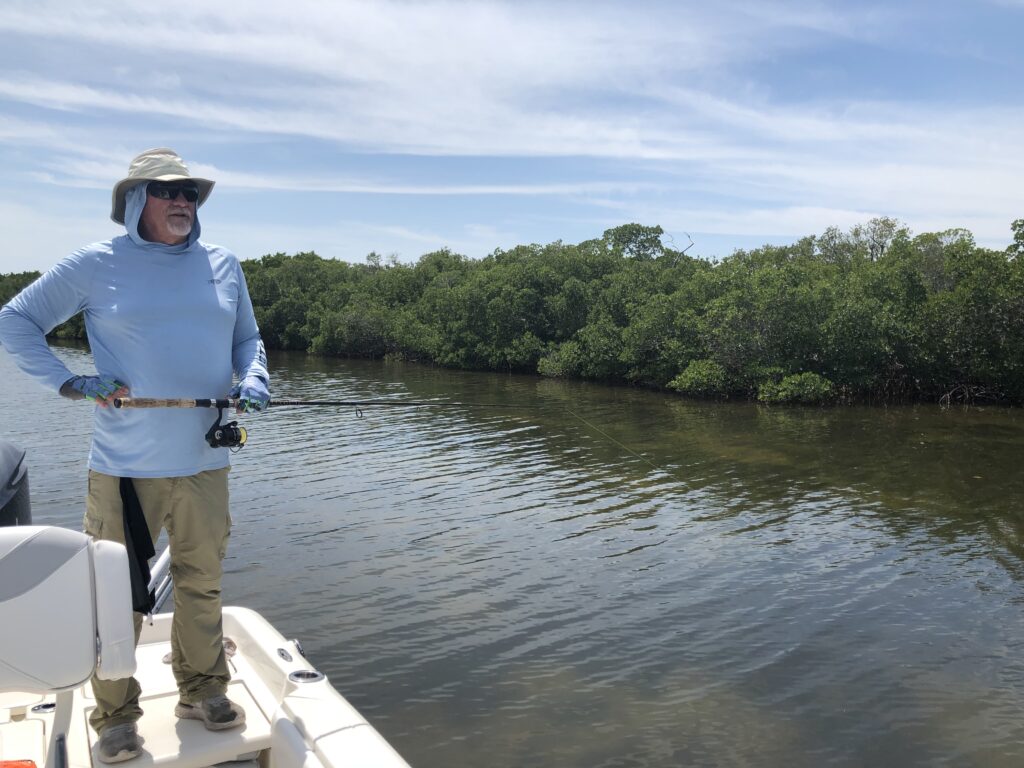
Then I got my chance.
I found myself travelling to Punta Gorda, Florida for a few days in late March this year, and inshore fishing was on the agenda. My mind instantly jumped to those feisty linesides that would be bulking up in preparation of the spawn, but I couldn’t help it, I got greedy. I wanted my inshore slam; snook, redfish, speckled trout.
I was sharing the boat with Tim Lesmeister that day. Tim was also in Punta Gorda for the same meeting I was. We would be fishing around different parts of Gasparilla Sound, on the north side of Charlotte Harbor. The water between the barrier islands and the mainland stays protected from the worst of the current and wind that the Gulf of Mexico can offer, which leads to slick water and an estuary teaming with life.
Tim and I were fishing with Captains Jesse and Kelly of Florida Inshore Xtreme. While we were focused on inshore fishing, they offer many other options. Their specialty has become targeting goliath groupers nearshore. Were were looking for considerably smaller fish, but they were no less prepared for our target that day.
Our First Stop
As the boat coasted to a stop in our first spot, Kelly started rigging some ladyfish heads the size of softballs. When the power poles went down, she tossed it up near the mangroves, as Jesse did the same.
“We found some big sows in here getting ready to spawn,” Jesse informed us. “Big fish.”
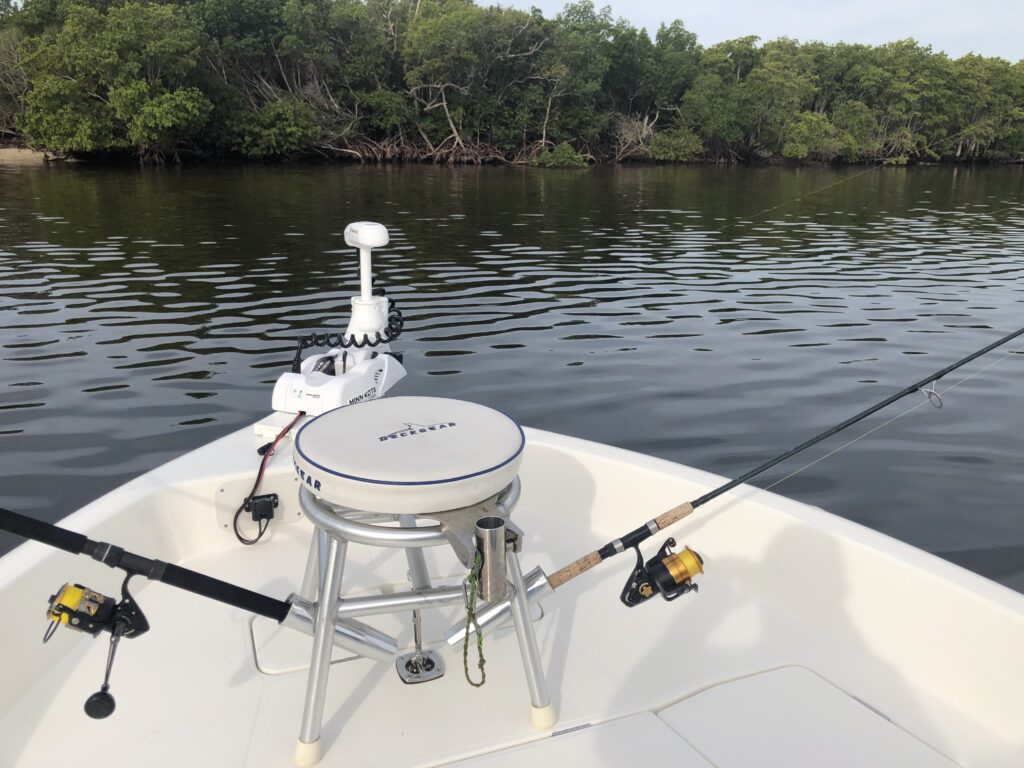
Even from 30 yards offshore, we could see massive shadows slipping from one mangrove clump tot he next. As often happens when inshore fishing, the first fish we hooked wasn’t what we were after. Small catfish were hard on our baits. The first 20 minutes or so were pretty slow, with just the subtle tap of bait-stealing catfish showing on the rods.
Until one of them snapped to life.
I grabbed the rod and started reeling. We had cut bait on circle hooks, so there was no need to horse on the rod to set the hook. After a few cranks, the line went slack. It was probably my fault. I think I pulled the hook right out of her mouth. After a little while longer battling the annoying catfish, we packed it up and went looking for more active fish.
Our Next Stop
After striking out on the big snook, Jesse and Kelly wanted to get the stink off the boat. We made our way to small grass flat and started working whitebait under corks for trout. We hoped the change would produce fish, and boost morale. It worked.
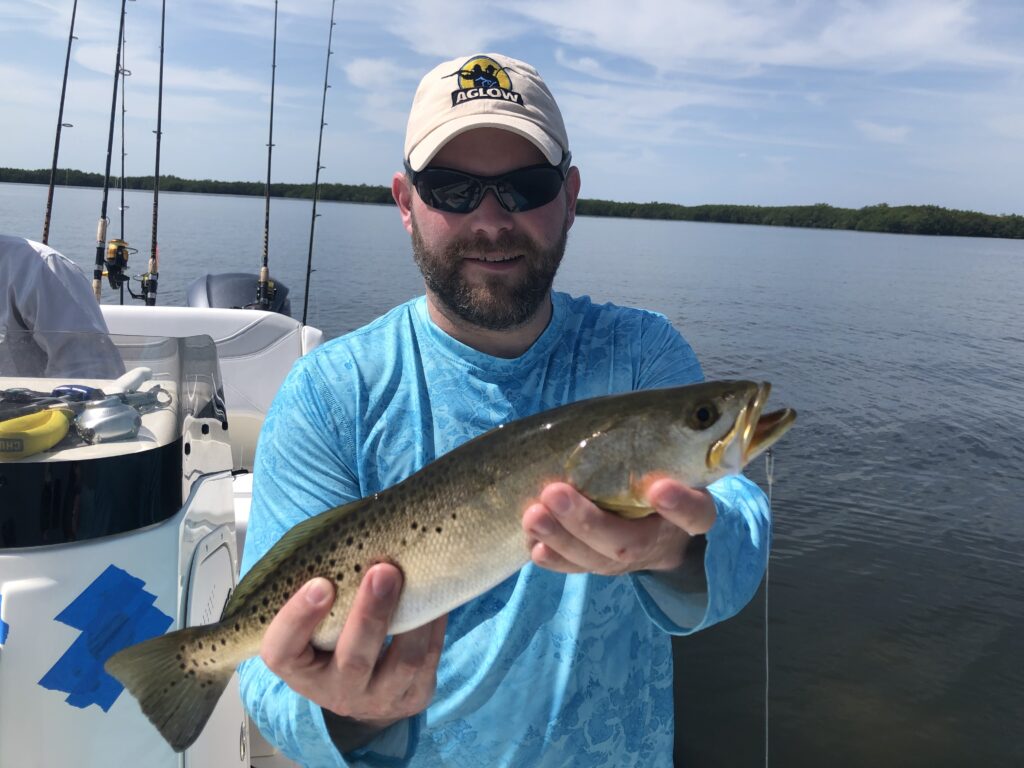
My first three casts produced strikes, two of them respectable speckled trout. We boated several nice fish before a pod of dolphins worked up to the edge of the grass. Rather than try to compete with the dolphins, and with the stink of no fish having been lifted, we made our way back to the mangroves looking for snook and redfish.
Turning Point
With boat traffic increasing, and the day slipping away, we made our way to a small mangrove island sheltered on the windward side by two other small mangrove island. The water was glass-smooth, so we decelerated well away from the island and crept up to casting distance slowly.
Captain Kelly handed me a rod with a fresh and lively whitebait “this time of the day, they’ll be tight to mangroves. Get it as close as you can and let him kick around. I think we’ll get into them here.”
The ripples receded in the shadows of the overhanging mangroves. The line danced as the whitebait kicked and tried to swim away from the cover we all hoped was holding fish. There was no wind, no chop, no nothing. Just the slightest flutter of fluorocarbon leader, twitching alongside the mangroves, until the surface exploded, and the drag hummed as the fish made a mad dash back to the safety of the mangrove tangles.
I steered the rod away from the trees, and tried to make gains in the moments when the drag would let me. The fish turned, angling away from the trees, and we quickly got it on board. We had the first snook of the day. Not the monster sows we were after in the morning, but a good fish nonetheless. That spot gave up several fish of similar size to both Tim over a relatively short period of time. The action was fast, and we were boating good fish, but the day was waning quickly.
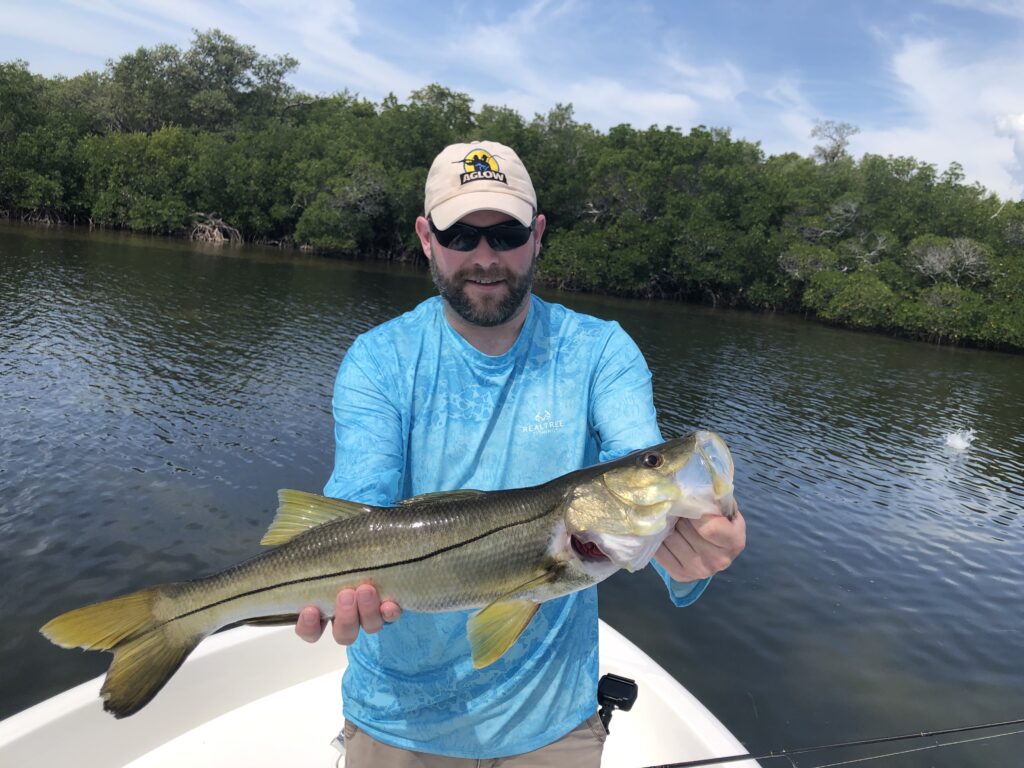
Still no redfish.
Was my inshore slam slipping through my fingers?
Last Chance
You don’t leave biting fish to find biting fish, as the saying goes. We were in good numbers and quality fish, so we kept at it. As often happens when doing any kind of fishing though, the action eventually waned. We had worked our way down this line of mangroves and were almost out of trees, and time to fish. I started to seriously doubt if I would boat my inshore slam that day.
I pitched the bait near a small mangrove that stuck out about 10 feet further than the rest. Just as I closed the bail, when the water under the mangrove erupted with a violent strike.
The fish immediately hooked itself, dove back for the safety of the overhang and taxed the drag on the reel.
Captain Jesse shouted directions. “Get him turned, don’t let him get in that tree! That’s a big, big fish on light tackle, cup the drag if you have to! Get him out of those trees!”
After working against me to get back to the tree he struck from, then reversing course and running up the edge of the trees, the fish turned and dug for open water. Every time I made an advance of a couple cranks, the drag would come back to life as the rod dipped and the fish took my gains and then some.
I knew we were on a good fish, even by inshore standards, by the tone of Captain Jesse’s voice. “That’s a big fish, on light tackle. He’s away from the trees, just let him pump and make up ground when you can. You can’t horse him in here. Let him wear himself out. That’s a big fish.”
Surprise
His tone changed a little as the fish finally came into view after almost 10 minutes of battle.
“A jack? No way, I saw it break water and turn. I knew that was a big snook.”
I brought the fish alongside the boat and as he handed the fish off to me, he said again, “I really thought we were into a monster snook. That’s a really nice jack, just not what I thought we had.”
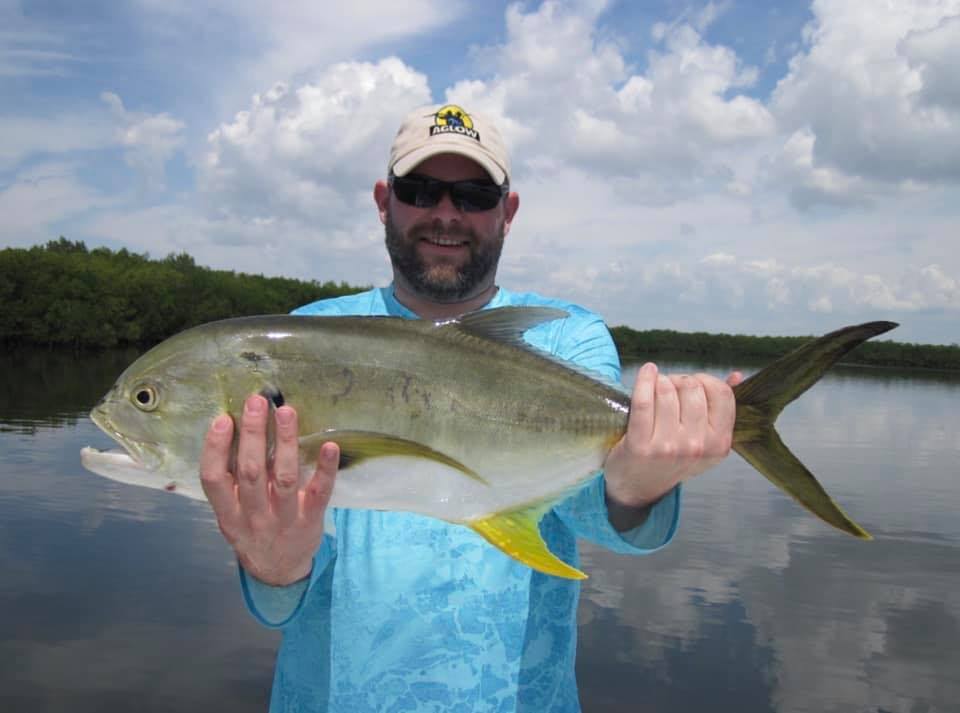
We finished working up the edge over the last bit of day that we had, and boated a few more nice snook, but no redfish ever came to play for me, though Tim managed to get into a couple.
I didn’t boat my inshore slam that day, but there was no shortage of good fishing, and that jack was one anyone could be proud of, so it’s nowhere near a tag soup situation. By the time the day ended we had put a good number of quality inshore fish in the boat, and enjoyed some great conversation and a beautiful day on the water.
I still have time for my inshore slam, and I’ll be back in Florida later this year.
Hopefully it happens then.
What is an inshore slam?
An inshore slam is when you catch at least one each of three relatively common inshore fish species in one day. To complete your own inshore slam, you’ll need to land a redfish, a snook, and a spotted or speckled trout. For much of the year all three fish can be found relatively close to each other. Redfish and snook can be found cruising along cover looking for prey, while the trout may be the one you have move off to different areas to find. Grass flats or bottom transitions often hide these toothy fish.
What kind of tackle do I need for inshore fishing?
While many people have an image of huge brass reels, and rods that intimidate pool cues, most inshore fishing can be done with the same kind of gear you might use to go after bass. While I was fishing with a guide, so I wasn’t using my own gear, I easily could have been using the same setup I use when frog fishing in Indiana. This means a 7-foot rod, medium-fast action, with a spinning or baitcaster reel lined with 35-pound braid tied to a 20-pound fluorocarbon leader. You might tangle with something that tests your gear, but in saltwater, it’s tough to have a rig in hand that something lurking below can’t test.